People
Met CEO Daniel Weiss on the Met Breuer’s Future, and Whether Affirmative Action Has a Place in the Museum World
The Met CEO discusses the role of the encyclopedic museum in an increasingly restive society hungry for change.
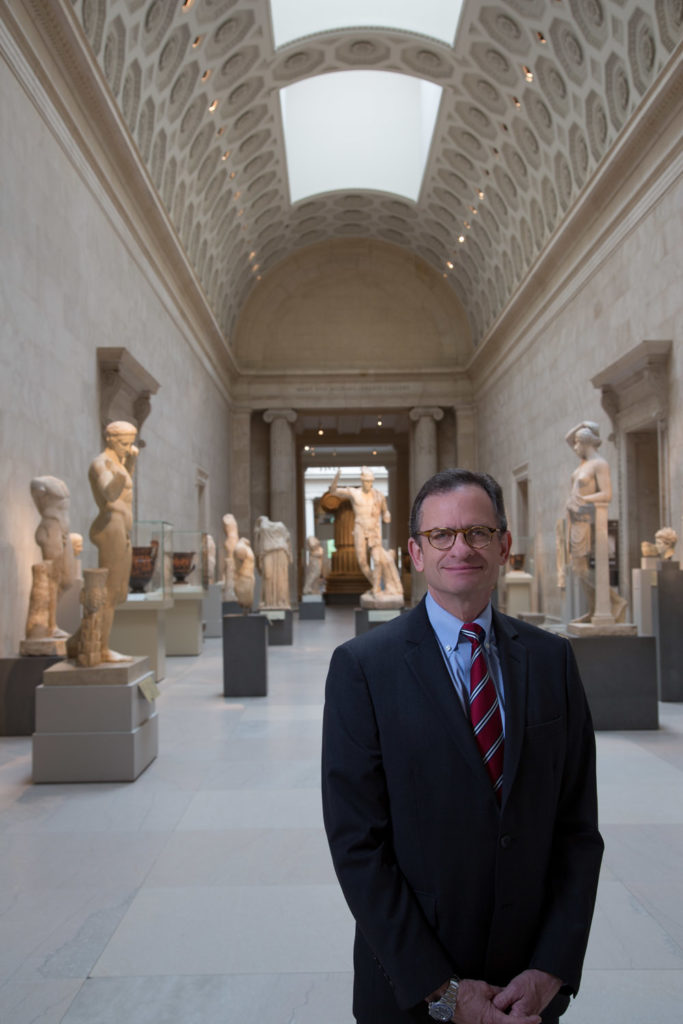
The Met CEO discusses the role of the encyclopedic museum in an increasingly restive society hungry for change.

Andrew Goldstein

Ensconced in a spacious suite on the top floor of the Metropolitan Museum of Art that opens onto a grand balcony overlooking Central Park—and the Fifth Avenue apartments of several major museum patrons—Daniel Weiss sits behind one of the most august desks in the cultural world.
Befitting the office of the CEO of the Met, the room is decorated by a personalized assortment of treasures from the collection. Alfred Sisley’s delicately hued Rue Eugène Moussoir at Moret: Winter (1891) and Andreas Achenbach’s dramatically Romantic Sunset After a Storm on the Coast of Sicily (1853) are joined on the walls by a violin borrowed from the musical instruments department—a reminder of the “feeble attempt” Weiss once made to play one—as well as the original typewritten copy of a famous Vietnam War poem by Major Michael Davis O’Donnell, a helicopter pilot who was shot down and went missing in action for 29 years. Weiss is currently writing a book about the poem.
It’s possible that the former college president may one day be able to write another book about a different kind of conflict, too. Since effectively taking the reins of the Met last year in the wake of director Thomas Campbell’s abrupt departure, Weiss has found himself at the head of a great institution at a time when the very things the museum stands for—established tradition, confident authority, and unidirectional communication—have come under unrelenting fire by a restive society hungry for change. At the same time, changes that Weiss has presided over, such as a ticket-price increase for out-of-state visitors, have proven sensationally controversial, sparking oppositional op-eds and essays in leading cultural publications.
On a recent afternoon, another one of Weiss’s major changes was quietly moving into his own (much smaller) office down the hall. Last month, after a lengthy search, Weiss and the board appointed Max Hollein as the museum’s director, his future partner in guiding the museum through tumultuous times. Here, in the second half of a wide-ranging interview, artnet News’s editor-in-chief spoke to Weiss about how he views the recent controversies and how the Met can navigate swiftly changing popular sentiment while remaining true to its enduring mission.
This is the second installment of a two-part interview. You can read the first half here.
Would you say the board is still as keen on moving into the contemporary? Is that still a mandate that is still front-of-mind?
The mandate is for us is to do Modern and contemporary in a way that’s consistent with what the Met does. We have 17 curatorial departments—we cover the entire globe and 5,000 years of art. One of those is Modern art. So the board’s mandate is: figure out how to do that in a way that’s consistent with our identity and our mission. We’re not the Modern, we’re not the Guggenheim, we’re not the Whitney. And the board is fully supportive of that. I think what they want is for the Met’s Modern art program to find its fit within the larger institutional framework, which none of those other museums have to worry about—because that’s all they do.
Speaking of Modern and contemporary, one of the Hollein’s challenges will be how to approach the Met Breuer, and whether or not to renew its lease when it comes up in 2023. Under the guidance of Sheena Wagstaff, the Met Breuer has become a laboratory for a style of curation that can bridge the core historic collections and newer art through what Roberta Smith has compared to biennial-style exhibitions. But while the Met Breuer has had marked curatorial successes, its attendance has not been wildly encouraging—its total attendance for fiscal years 2016 and 2017 was less than the Met proper’s Michelangelo show alone.
Our visitor numbers are commensurate, or even a little bit better, than the Whitney’s were in that building. It’s not as big as the Met, so the question is: what are the reasonable attendance assumptions about the Beuer? We have more or less done what we expected we could do. So, I think that’s OK—it doesn’t have to be in the millions.
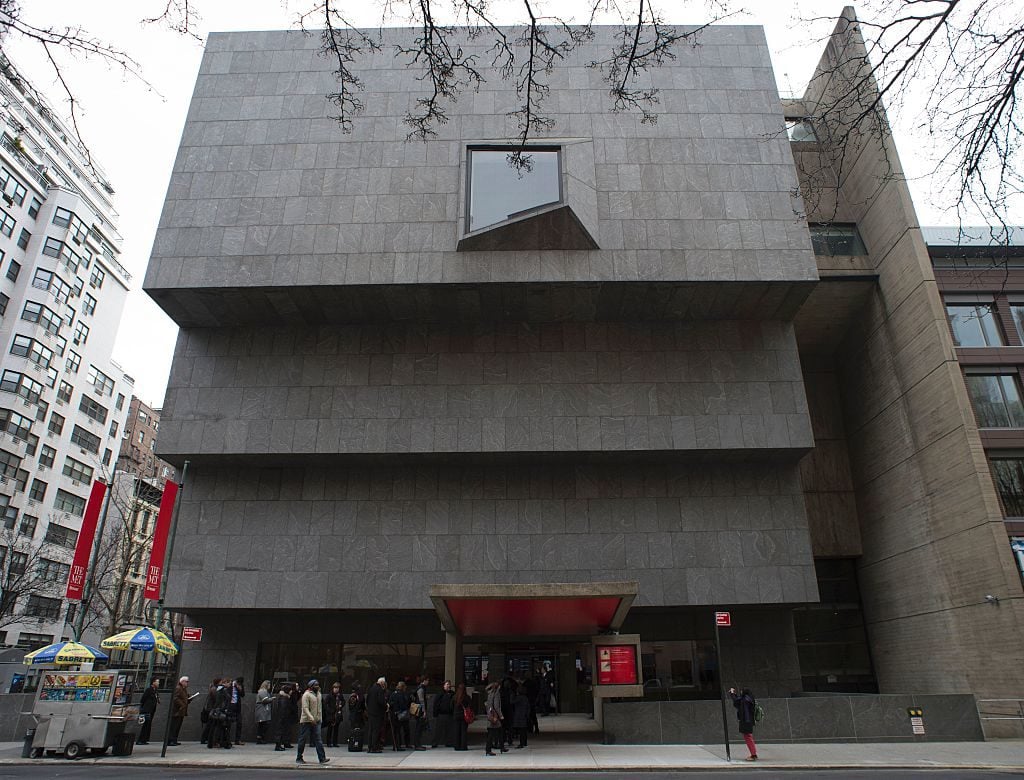
The Met Breuer. Photo: DON EMMERT/AFP/Getty Images.
At the same time, according to our calculations, curatorial expenditures at the Met Breuer have run at least $3.2 million over budget. Considering these factors, what would you say are the benchmarks for success at the Met Breuer on the operational side? And would you say it is hitting those goals?
Great question. I think we could have done a better job at the beginning of outlining specifically what those goals are and figuring out what it’s really going to cost to run it. And it has been more challenging that way—it’s a big complicated commitment that we’ve made. But the programming success that we have had is an attestation to the Met’s ability to do interesting work in different contexts.
So I would say that now that we’re in it, the most important measures of success are: are we contributing thoughtfully, distinctively, and in a way that is compelling to the public to the cultural landscape of Modern art in New York and in the world? And I think there’s no question that the answer is “yes.” That’s measured by critical response—what kind of coverage are we getting around our exhibitions? Public engagement—what are our visitor numbers? And then, our own judgments about the quality of scholarship and the quality of the exhibitions that we’re mounting there. And I think on all of those measures we’ve done exceptionally well.
The Met should be doing things at the highest level in the field. And I think we’ve been doing that at the Beuer. That’s how I would look at whether or not we’ve been successful, even if it has cost us more money than we thought, and even if it was more complicated than we thought. Ultimately, we’re a mission-driven institution and we can define our mission in the ways that I did. And we’ve done that, I think, at that Breuer pretty successfully.
Would it be accurate to look at it as sort of satellite R&D skunkworks where you can test out strategies of merging these different art historical categories in advance of potentially bringing that programming back to the Met in the future?
That’s a really nice way of putting it. In some ways, this was a kind of laboratory for us. We leased the building with the idea that we were going to do this sort of programming here, that it would be a little bit different from what we’re used to, and appear in a new space. We’ve learned a lot about how to collaborate more effectively and do that kind of programming—and you’re exactly right that we could take it back to the main building.
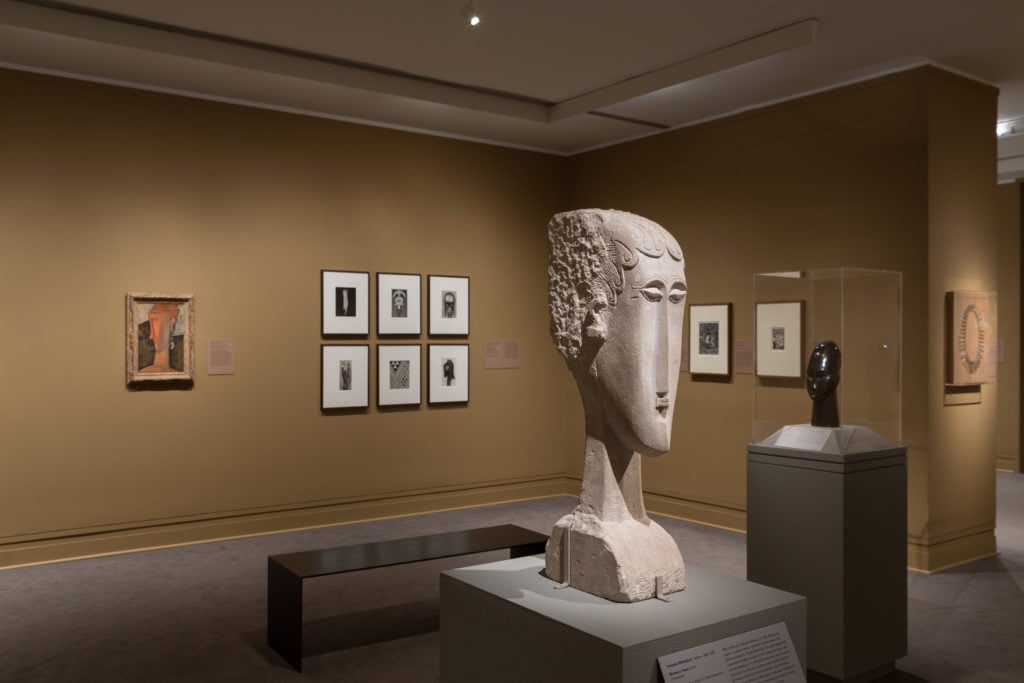
A view of the current Modern and contemporary art galleries at the Met.
Photo: Courtesy of the Metropolitan Museum of Art.
That raises the next question, which that, from all indications, the $600 million Modern and contemporary wing that Thomas Campbell championed has not been abandoned but really just been taken off the front burner while other more incremental improvements take place, and that it continues to be in the works. Is that the case?
There’s no question that the board and the administration all agree that the southwest wing of the Metropolitan needs to be replaced, that what’s there now is not worthy of the collections that we house and the programming and that we continue to put into that space. So that project does continue to move forward, and we have ideas now for how we can do that in a way that we think is compelling, and that Max will get here and help us to put that plan into place. But that is moving forward.
Our main commitment, programmatically and from a mission-driven standpoint, is this building [on Fifth Avenue] and the Cloisters. Those are the flagship institutions for the Met, and if the Breuer were to fit into that, that would be something we would talk about. But that’s not our long-term view. Our long-term view is that we have to invest in this facility here.
And are you still planning to proceed along the same lines that David Chipperfield set out in his proposed masterplan for the wing, with the $600 million price tag? Or are there other avenues you are looking at it?
We’ve continued to work the problem. The building that he initially designed for us was in many ways magnificent, but it was very expensive and probably more complex than we were looking for. So we’ve been continuing to work with David to clarify our own expectations as a client, and to be a better client, as it were—to be clearer about what’s most important and see how cost effectively we can achieve that and still build the finest Modern art museum space in the world. And we think we’re on a path with David that’s very exciting, and we’ll have more to say about that as the work unfolds over the next six months or so. It’s a good direction for us.
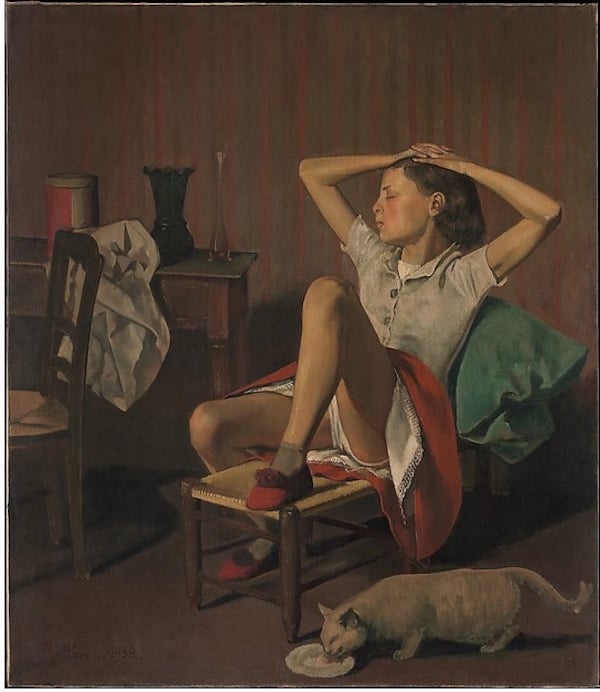
Balthus’s Thérese Dreaming (1938) sparked a petition demanding its removal at the Met. © 2017 Artists Rights Society (ARS), New York. Courtesy the Metropolitan Museum of Art
To pivot a bit, the Met has to contend with all of these financial and programmatic decisions at the same time that it finds itself in a fraught and unruly era, when the traditional cultural establishment—which the Met it entirely embodies—has come under unremitting fire by societal forces bent on sweeping away old systems of power. Balthus, who in recent memory stood for a kind of in-the-know edgy outcropping of art history, was the target of a populist campaign last year after a young woman visited the museum and was “shocked” to see the painting depicting a young girl “in a sexually suggestive pose… given the current climate around sexual assault and allegations that become more public each day” in the wake of the Harvey Weinstein scandal. Those words “current climate” are fascinating to me. How did you view that episode, and what do you make of the calls that the Met accommodate the shifting exigencies demanded by the “current climate”?
Well, our job, in some ways, is to mediate between the long-term values of the Met—and the scholarly commitments that we have to the collection—and the world that we live in. So, there are always perspectives on those issues that people bring when they come into our building, and the Balthus is a good example of a painting that incited concern for perfectly legitimate reasons on the part of the some 11,000 people that signed this petition.
On the other hand, the work of Balthus is established in the canon of important art of the 20th century, we have collected his work for a long time, and it’s been hanging on the wall for a long time. We did a major exhibition on Balthus some years ago and we addressed some of those questions. Our goal is decidedly not to avoid controversy, to avoid challenging people—that isn’t the kind of freedom of expression that world-class cultural institutions are committed to.
Instead, our commitment is to the responsible presentation of ideas and objects that enlighten and enrich our experience as human beings, and there’s no question that Balthus does that. So we will continue, as it were, to present objects and exhibitions that will offend some people. I also take seriously the concerns that people have that some works of art are offensive to them, and I invite them not to see those works of art. They can leave the gallery, they can turn away, they can even organize a petition or write an article. All of those we celebrate. That’s part of what our society is dedicated to.
I do worry that we live in a time where people want to avoid being confronted by ideas they disagree with. We don’t know how to debate. We’re losing the ability to live in a society where freedom of expression is something we navigate on a day-to-day basis as part of what it means to live in a functioning democracy. Our job as an art museum is to contribute to that main wellspring of cultural, intellectual richness by bringing forward programming that both inspires and offends.
Spoken like a true former college CEO! To segue a bit, another manifestation of the old establishment that has become controversial of late is, of course, the white male authority figure. Immediately after Max Hollein’s appointment, the Guardian wrote a piece calling his hire “an apparent missed opportunity” because he was not a woman or a person of color—a critique echoed by other media outlets as well. This reaction couldn’t have come as a surprise, given that the calls for a demographic change at the top started right after Campbell’s departure, for instance with Liza Oliver’s op-ed in the New York Times. How do you feel about the criticism?
I will say that we went through an extraordinarily careful process of doing everything that we could to interview a diverse pool of candidates for this job. There’s no question that our first choice was to hire the very best person we could from a pool that was as diverse and representative as it could possibly be, and everyone on the search committee would agree that we worked very hard to do that.
But, ultimately, our obligation to the mission, our obligation to the institution, and our obligation to those values is to hire the best person. And we did that. The question is now whether Max Hollein is committed to those same values—and he’s emphatically demonstrated that he is, that a diverse and inclusive institution is at the center of what he thinks is important.
So I think we may not have hired a director of the same kind of demographic that some people would like. Let’s have this conversation in five years and see how well we’ve done, and whether or not it was a good hire around those specific questions. Did we diversify our curatorial staff? Have we enriched our programming? Are we a more welcoming institution to the world than we are today? That’s, I think, the real test.
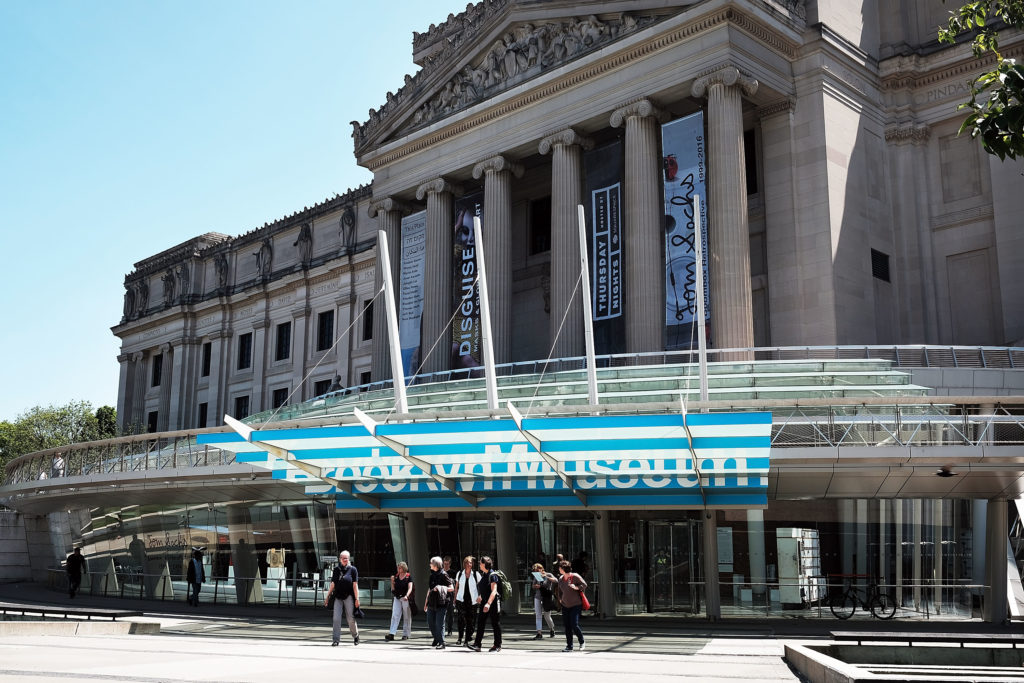
The Brooklyn Museum. (Photo by Spencer Platt/Getty Images)
Another manifestation of this kind of identity-based criticism of a museum hire is playing out at the Brooklyn Museum right now, which is receiving withering criticism over its choice to appoint a curator of African art who is white. I imagine your museum must be watching this closely, because the heads of the Met’s own renowned African and Oceanic curatorial department are also similarly complected. Do you feel sympathy for the Brooklyn Museum in undergoing this criticism?
I absolutely appreciate the frustration that people have that the curator chosen to lead a department of art from Africa was not a person of color. On the other hand, one mark of a pluralistic society that is truly committed to diversity and inclusion is that people are judged only on the basis of the professional qualities that they’re being evaluated for—and there’s no question that the person they hired is an outstanding candidate.
In my own professional field, I’m an medievalist. I write about Christian culture in the 13th century in the age of the crusades. I’m not writing on those subjects based on my own personal experience as a white Jewish guy who grew up on Long Island who is completely areligious. I write on them on the basis of my scholarship and my commitment to the discipline. And I think ultimately what we should work for as a pluralistic society is to ask only that question: are these people capable of doing the job at the very highest level that it can possibly be done?
But it’s a work in progress. Both sides have a very legitimate grievance. I get that. But, in the end, I trust that the Brooklyn Museum made the best decision it could make based on the field of candidates.
To go back to your university background, were you in favor of affirmative action when you were a university CEO? And if so, do you feel there is a correlation here?
There’s a little bit of a correlation, and that is in the following way. College admissions is ultimately about building a class. It’s not about hiring a single person—it’s about admitting 500 or a thousand students. The only way that class functions as an interesting learning laboratory is to have diversity of all kinds of perspectives and experiences. In the same way, the only way a curatorial group can function in an interesting and rich way is if there’s diversity among them.
But each individual appointment has its own story. So affirmative action as a principle for college admissions in some ways misses the point. Every individual has their own story, whether they’re a person of color who’s the first generation in their family to go to college, or someone from the majority who grew up with a privileged background. They all have a story to tell, and you need all of them in the same space in order for the learning environment to thrive. And I think that’s our goal here at the Metropolitan, as well as it is at the Brooklyn Museum. You can critique any one specific individual decision, but you have to look at the whole enterprise.
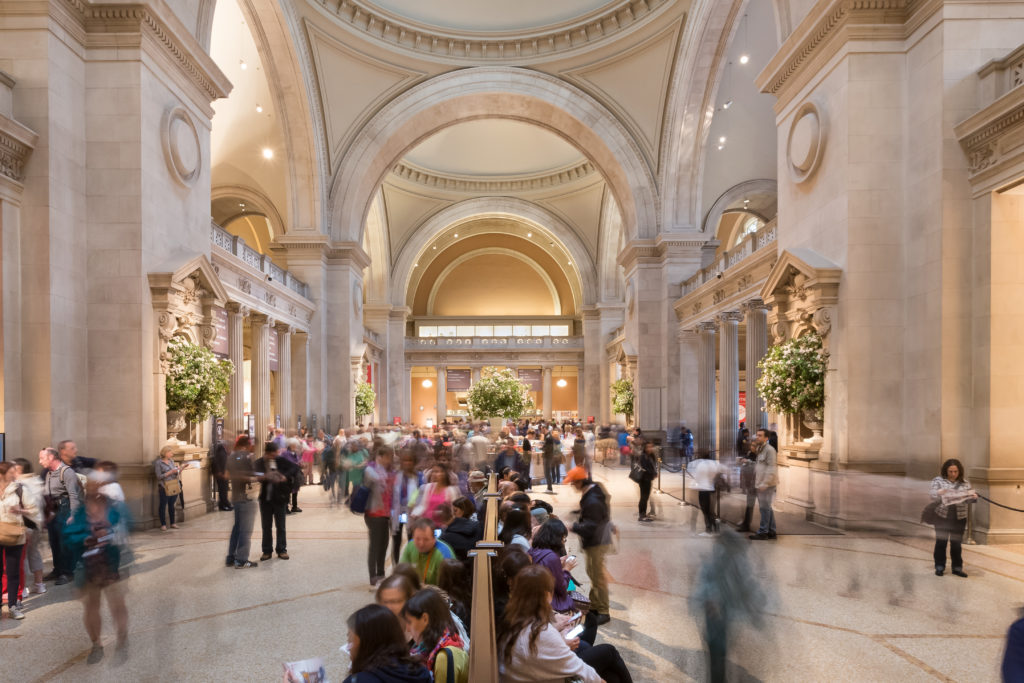
Visitors at the Met. Photo by Brett Beyer, courtesy of the Met.
To move on to another subject that has enlivened strong reactions from the cultural community, earlier this year the Met raised its admission fees for out-of-towners, and the uproar that ensued was enormous. Now, I didn’t bring this up as we were talking about the business side because it doesn’t strike me as fundamentally a business issue. From a fiscal perspective, it makes sense to charge people admission who aren’t paying taxes to support the museum as a public utility—but at the same time, the projected revenues from the change are a drop in the bucket for the Met overall. The issue seems to stem more from core principles inside and outside the museum that are at odds—on the one hand, that people, rationally, need to pay to support the culture they consume, and, the other hand, that museums should be as free to visitors as the air we breathe. Why do you think people got so upset? Did the board see it coming?
To the contrary, the response was very balanced and I think entirely healthy. The Met thought carefully about the policy change that we ultimately implemented. We took counsel from city officials, from members of our board, and from our staff to try to get it right. And, indeed, we knew that when we introduced the policy it would generate a strong response because the Met is a beloved institution. But the response was more balanced than we expected. And what came out of that was a thoughtful discussion about who should pay for culture in our city and our country—because ultimately somebody has to pay for it.
The Metropolitan Museum of Art is not a federal institution and it receives less than 10 percent of its funding from the government—the City of New York. If in that context the pay-as-you-wish policy has effectively failed to perform, then ultimately what responsibility does the public have? That’s the discussion we should have, and that’s the discussion the media generated. So, in the end, I thought it was very productive.
If the Met manages to achieve its 2020 budget goal, or any other financial milestone, would you consider reinstating the former across-the-board pay-what-you-wish admission policy?
The ultimate question is who should pay for culture. I believe that co-investment is the right approach. Everyone who benefits from the Met has an obligation at some level to contribute to its well-being. The government, philanthropic supporters, members of our board, and the public—each has a responsibility. And I think the policy we now have strikes the right balance.
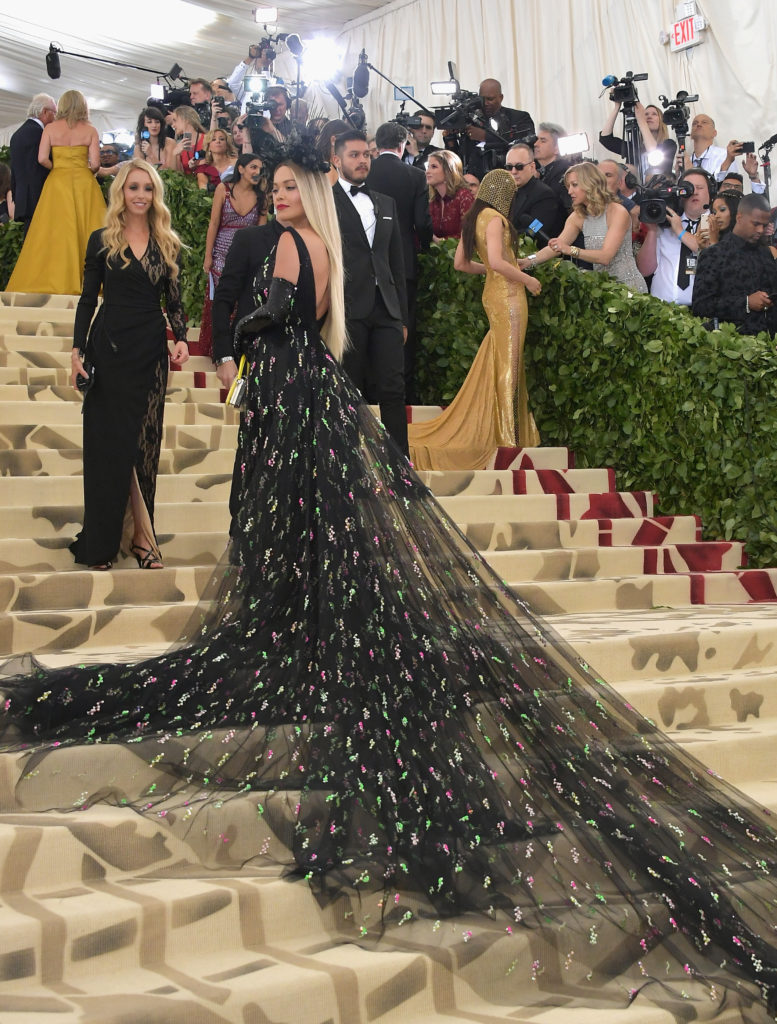
Rita Ora attends the “Heavenly Bodies: Fashion & The Catholic Imagination” Costume Institute Gala at the Metropolitan Museum of Art. (Photo by Neilson Barnard/Getty Images)
The Costume Institute’s annual Met Ball just took place, bringing the eyes of the world upon the museum’s most glamorous occasion. Under Anna Wintour’s guidance and Andrew Bolton’s leadership, the Costume Institute has become one of the Met’s biggest popular success stories, bringing in outsize revenues and attention. To what do you attribute its success? And are there ways that other departments could follow its example to be more self-sustaining and PR-friendly?
The real story here is about the increased interest and popularity of costume as an art form. And the Costume Institute has been a leader in elevating the visibility of costume as an art form for many decades. Under the leadership of Andrew Bolton we have done extraordinary work that has engaged the public and brought them into our museum, where they not only enjoy the Costume Institute exhibitions but other works of art as well. And that’s really our long-term goal—to embed costume and fashion into the larger context of the history of art. The “party of the year” is a very successful fundraiser that helps to advance that mission, and we are delighted to have the support we do from Anna Wintour and others.
Finally, what are you, personally, most exited about when you look forward at the next 10 years of your long-term plan?
Having been through difficult times, the Met is poised to do great things in the coming years. We have a very strong financial foundation, a brilliant staff, unparalleled collections, and, appropriately, ambitions to continue to be a world-leading institution. With the arrival of Max Hollein as the next director and my colleague and partner, I am extraordinarily excited about what it is to come and the chance to work with Max and everyone in our organization to advance the mission of the Met.